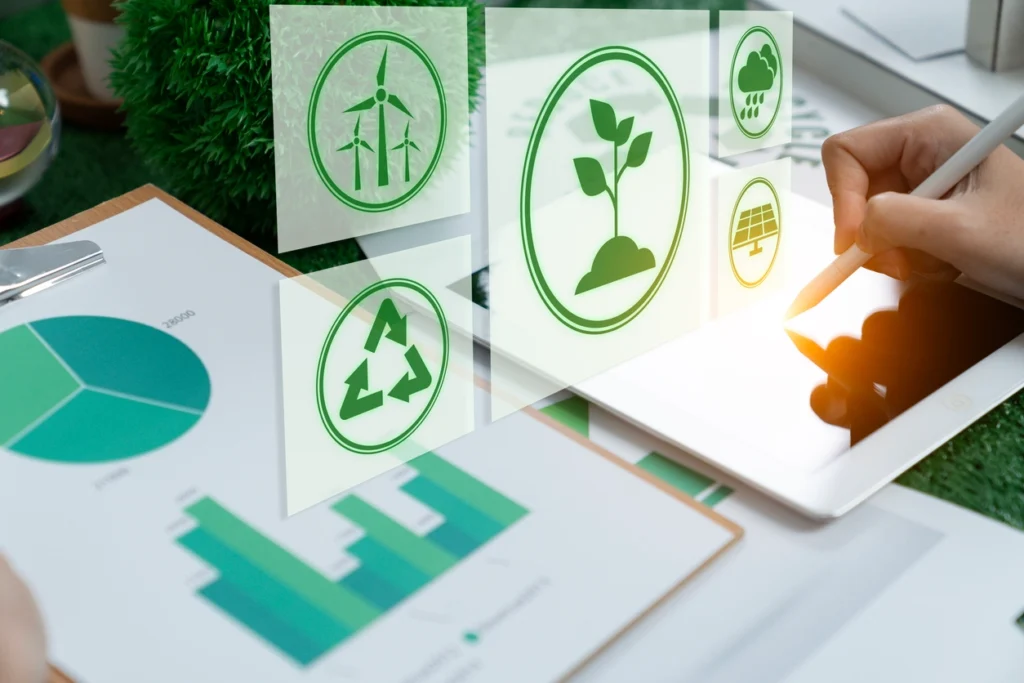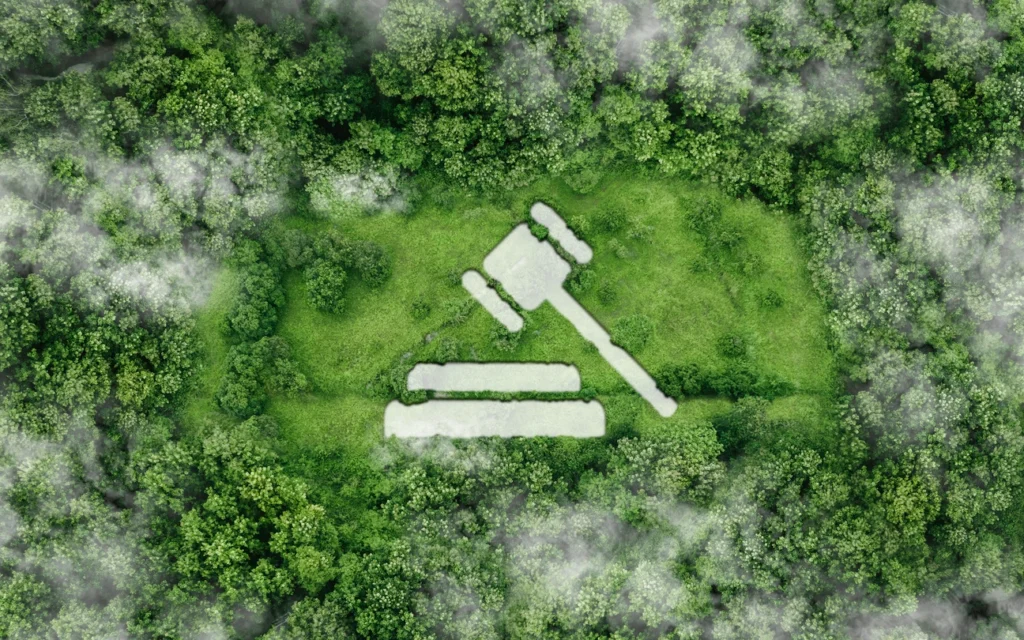Environmental Resource Management (ERM) is the systematic process of planning, implementing, and monitoring practices that aim to protect and sustainably use our natural resources. It’s about finding ways for humans to meet their needs while ensuring the health and longevity of ecosystems.

Why Does ERM Matter?
ERM is crucial for several reasons:
- Maintaining Ecological Balance: ERM protects air, water, and land resources, preserving biodiversity and the vital services that those ecosystems provide.
- Enabling Sustainable Development: ERM helps find ways to use resources responsibly, ensuring they are available for future generations.
- Supporting Economic Growth: Sustainable resource management practices can create jobs, attract businesses, and boost long-term economic health.
Key Components of Environmental Resource Management
Resource Identification and Assessment
- Types of Resources: ERM considers both:
- Renewable resources: Those that can replenish themselves (e.g., water, solar power, forests managed sustainably).
- Non-renewable resources: Finite resources that cannot be easily replaced (e.g., fossil fuels, minerals).
- Assessment Methods:
- Environmental Impact Assessments (EIAs): Analyze the potential effects of proposed projects on various resources to inform decision-making.
- Resource Inventories: Determine the quantity and quality of available resources within a given area.
Sustainable Use and Management Strategies
- Pollution Control: Technologies and practices to minimize the release of pollutants into the air, water, and soil.
- Conservation Techniques: Protects habitats, safeguards biodiversity, and promotes the sustainable use of natural resources.
- Renewable Energy Integration: Shifting towards clean energy sources like solar, wind, and hydropower reduces reliance on fossil fuels.
- Waste Reduction and Recycling: Minimizing waste generation and diverting materials from landfills for reuse.

Policy and Regulation in Environmental Resource Management
- Major Environmental Laws: ERM professionals must have a working knowledge of key laws like the Clean Air Act, Clean Water Act, among others.
- Industry-Specific Standards: Many industries have additional regulations governing their environmental impact (e.g., waste disposal, emissions limits).
- International Agreements: Global treaties like the Paris Climate Agreement influence ERM practices and collaboration in addressing cross-border environmental issues.
Stakeholder Involvement and Collaboration
- Diverse Stakeholders: Effective ERM involves communities, governments, businesses, and non-governmental organizations (NGOs).
- Conflict Resolution: ERM often requires mediating and balancing competing interests in resource use and conservation.
- Consensus-Building: Finding common ground and fostering partnerships is crucial for creating long-term, sustainable solutions.
Challenges and Best Practices in ERM
Addressing Climate Change
- Mitigation: Reducing greenhouse gas emissions through energy efficiency, renewable energy adoption, and sustainable land-use practices.
- Adaptation: Developing strategies to increase resilience to climate change impacts such as changing weather patterns, sea-level rise, and extreme events.
- Carbon Footprint Management: Tracking and analyzing an organization’s or project’s greenhouse gas emissions to identify areas for reduction.
Balancing Economic Growth and Sustainability
- Cost-Benefit Analysis: Thoroughly evaluating the long-term economic and environmental costs and benefits of different ERM strategies.
- Green Technology and Innovation: Investing in research and development of sustainable technologies to help reduce environmental impact while driving economic growth.
- Life-Cycle Thinking: Considering the environmental impacts of a product or project across its entire lifespan, from resource extraction through disposal.
Data and Technology in ERM
- Monitoring Systems: Using sensors and remote sensing to track resource use, pollution levels, and environmental changes.
- GIS (Geographic Information Systems): Analyzing and visualizing spatial data to optimize resource management and land-use planning.
- Modeling: Creating simulations to predict the potential impacts of different ERM actions and to inform decision-making.
- Data-Driven Decision Making: Emphasizing evidence-based approaches to ERM, ensuring decisions are grounded in reliable data,
Collaboration between governments, industries, and experts in the technology sector is vital for finding effective solutions to these challenges.
The Future of Environmental Resource Management
Emerging Trends
- Circular Economy: ERM is evolving to support the transition away from a linear model (take-make-dispose) to a circular one where waste is minimized, and resources are kept in use for as long as possible.
- Nature-Based Solutions: Harnessing the power of nature (reforestation, wetland restoration) to address environmental challenges like climate change adaptation and water purification.
- Climate Finance: Mobilizing investments in sustainable infrastructure and technologies that promote environmental goals alongside economic growth.

Career Opportunities in Environmental Resource Management
ERM offers a wide range of fulfilling career paths for individuals interested in making a positive impact on the planet. Here are a few examples:
- Sustainability Consultants: Work with businesses to assess their environmental footprint, develop resource management plans, and achieve sustainability goals
- Environmental Engineers: Design solutions for pollution control, renewable energy systems, and waste management infrastructure.
- Policy Analysts: Contribute to the development of environmental regulations or advocate for sustainable resource policies within government or NGOs.
- Restoration Ecologists: Focus on restoring damaged ecosystems, increasing biodiversity, and enhancing ecosystem services.
- Data Scientists and GIS Specialists: Play a crucial role using data, models, and mapping technologies to analyze environmental trends and optimize ERM strategies.
The Vital Importance of Environmental Resource Management
As the world faces growing environmental challenges, Environmental Resource Management (ERM) has never been more critical. Through thoughtful planning, strategic resource use, and collaboration between sectors, ERM offers a path toward a more sustainable future where human needs and environmental health are in balance.
Whether it’s developing innovative solutions to reduce pollution, mitigating the impacts of climate change, or protecting fragile ecosystems, ERM is where science, technology, and policy intersect to create real-world impact. With emerging focuses like the circular economy and nature-based solutions, this field is constantly evolving and offers a dynamic, purpose-driven career path.
If you’re passionate about finding ways to protect our planet’s precious resources, a career in Environmental Resource Management could be your calling. The future of our planet depends on skilled professionals who are ready to tackle these challenges and help build a more sustainable world for all.
Frequently Asked Questions About Environmental Resource Management
What are some real-world examples of successful ERM projects?
ERM successes span across various sectors:
- Restoration: Rehabilitating a polluted river system, improving water quality and aquatic habitat.
- Sustainable Urban Planning: A city redesigns its infrastructure to promote public transportation, energy-efficient buildings, and green spaces.
- Corporate Initiatives: A company reduces its carbon footprint through investments in renewable energy and implements a closed-loop manufacturing system.
Besides the environment, how does ERM benefit society?
ERM offers numerous social benefits:
- Public Health: Clean air and water safeguards health and reduces healthcare costs related to pollution.
- Job Creation: Green technology development, renewable energy installation, and waste management create new employment opportunities.
- Resilient Communities: ERM strategies help communities prepare for climate-related events like flooding or heatwaves.
Can I make a difference in ERM even if I’m not a scientist?
Absolutely! ERM requires a wide range of skills:
- Communication: Explaining complex environmental concepts to stakeholders or advocating for sustainable policies.
- Project Management: Coordinating ERM initiatives, timelines, and budgets.
- Community Engagement: Working with residents and businesses to find mutually beneficial ERM solutions.
What’s the difference between Environmental Resource Management and environmental science?
While related, they have distinct focuses:
- Environmental Science: Studies natural systems, how humans impact them, and collects data on environmental conditions.
- ERM: Applies this scientific knowledge to actively manage resources, implement solutions, and ensure compliance with regulations.
How is technology changing the field of ERM?
Technology is rapidly revolutionizing ERM:
- Drones: For monitoring large areas (forests, water resources) or mapping pollution spread efficiently.
- Advanced Sensors: Provide real-time data on air quality, water contamination, or energy consumption for swift intervention.
- Predictive Modeling: Helps forecast the impacts of development or climate scenarios, aiding ERM decisions.